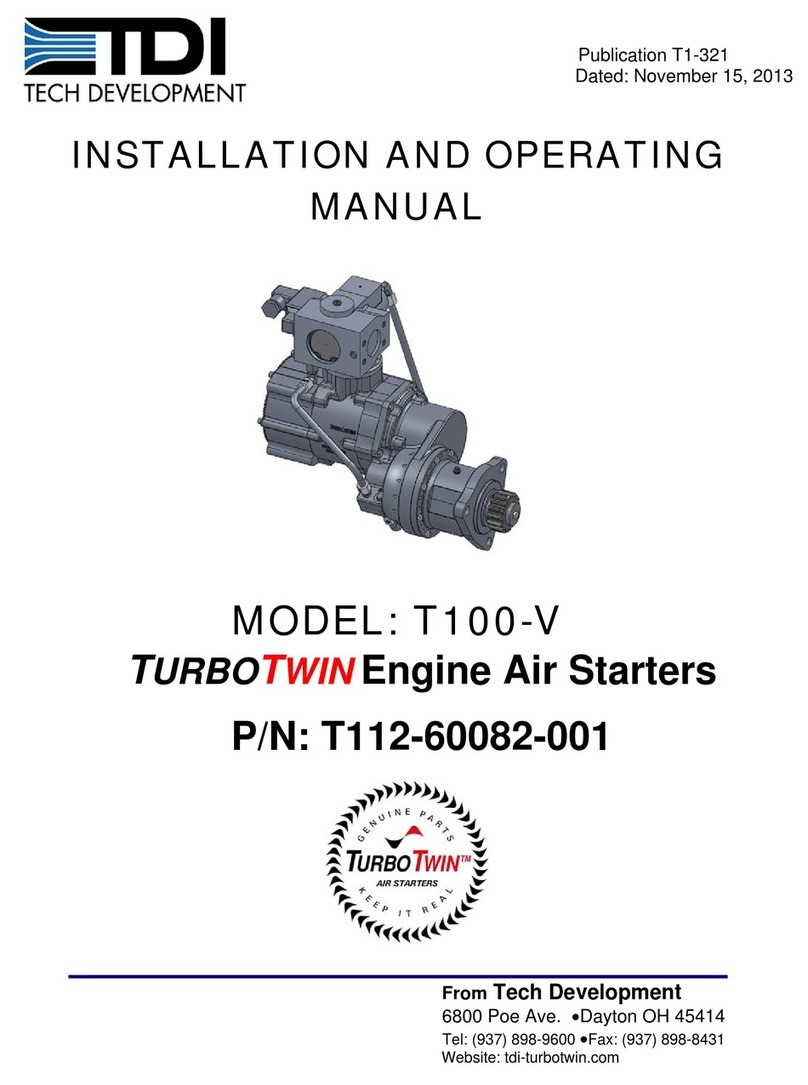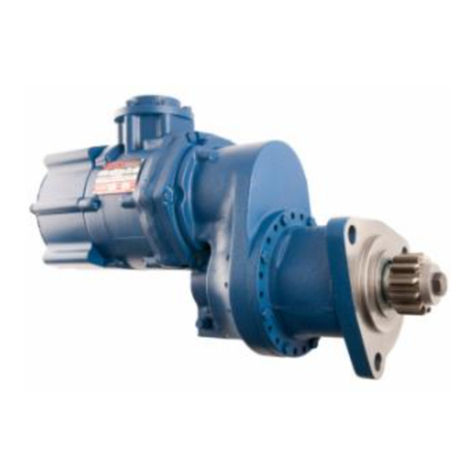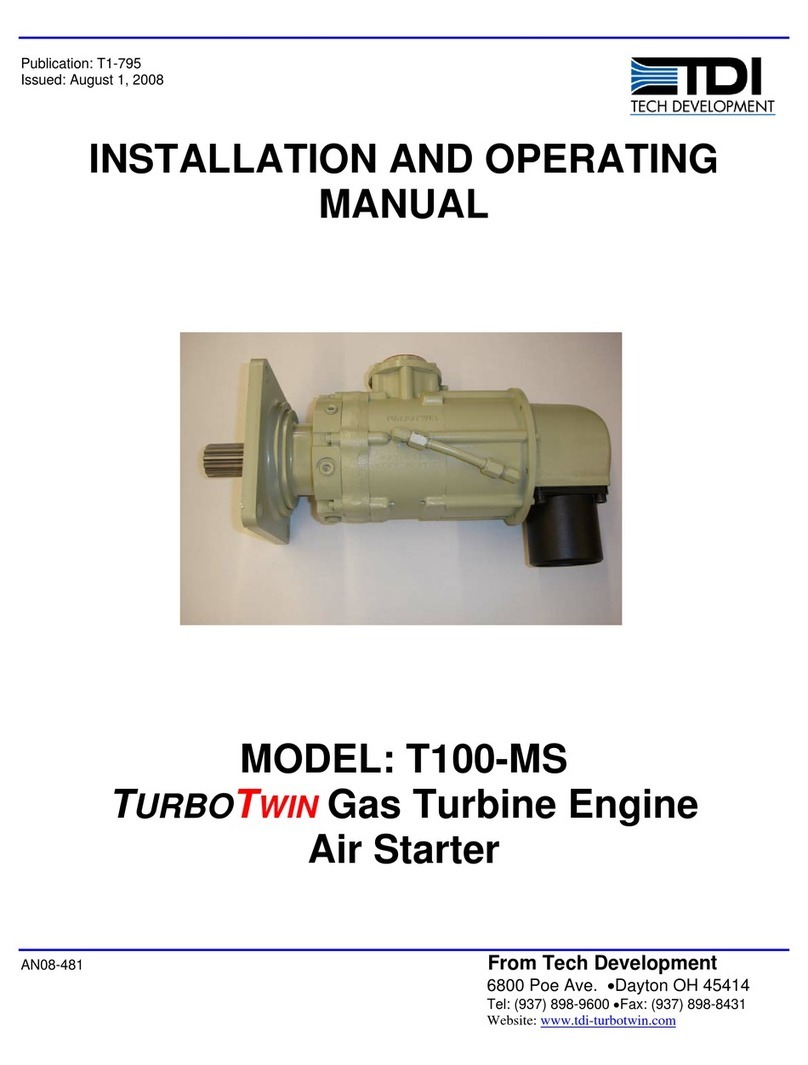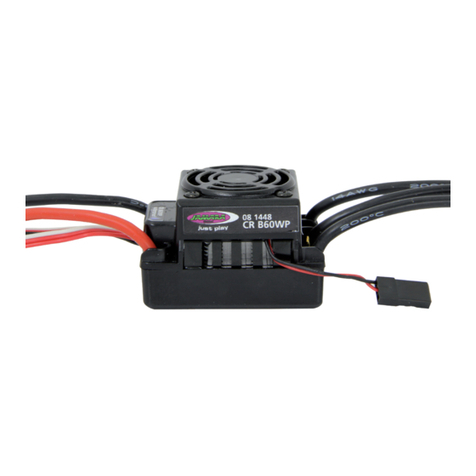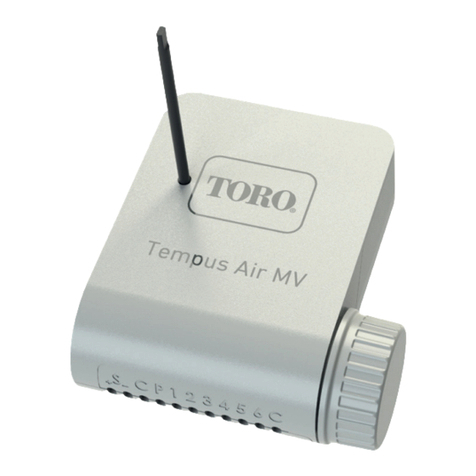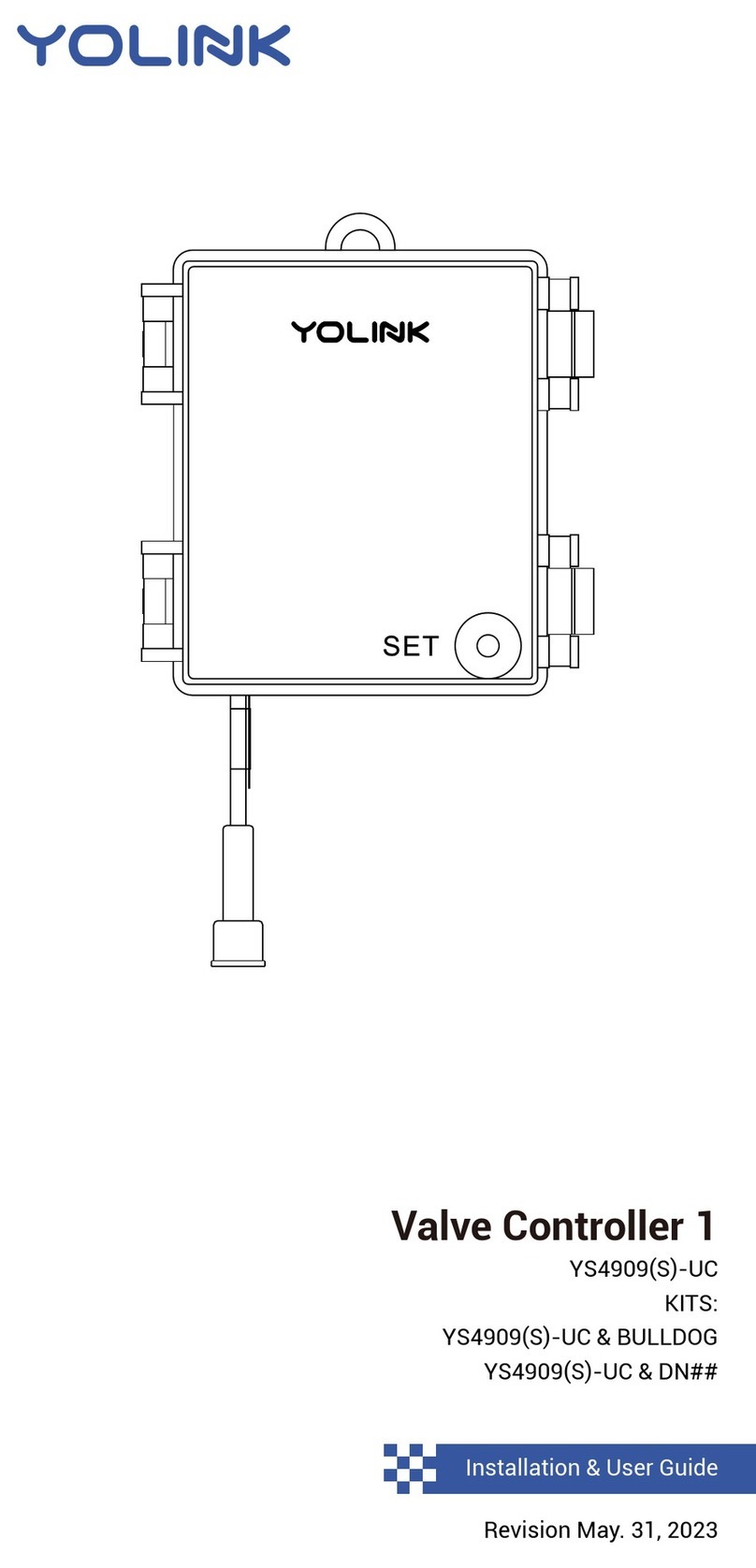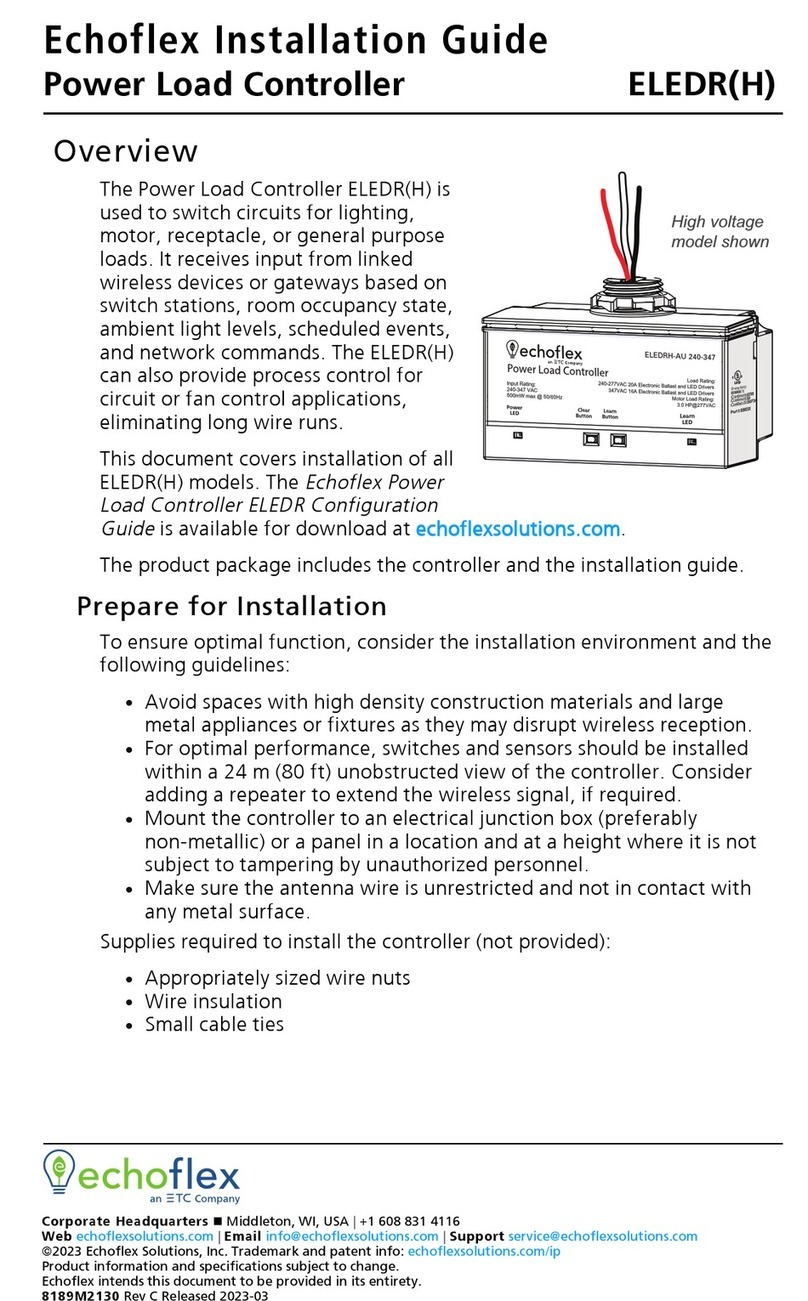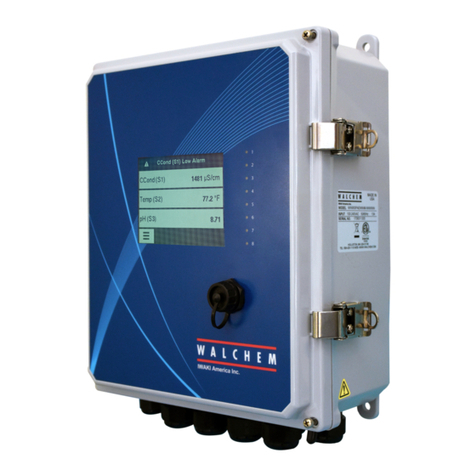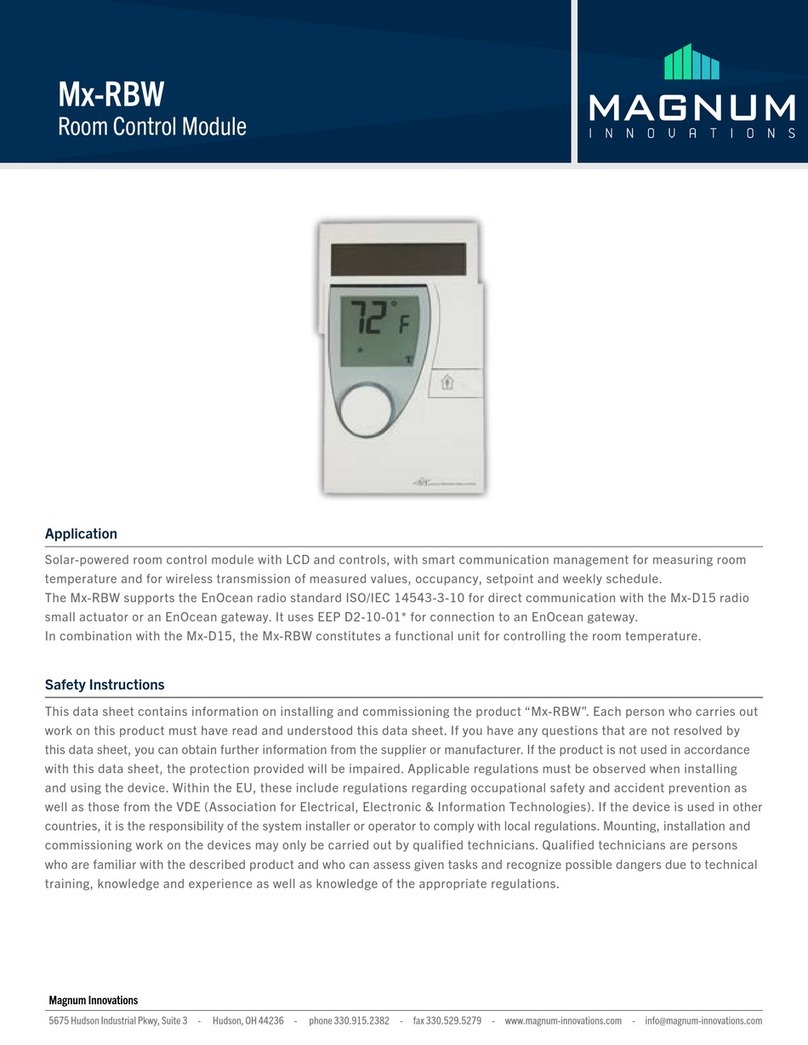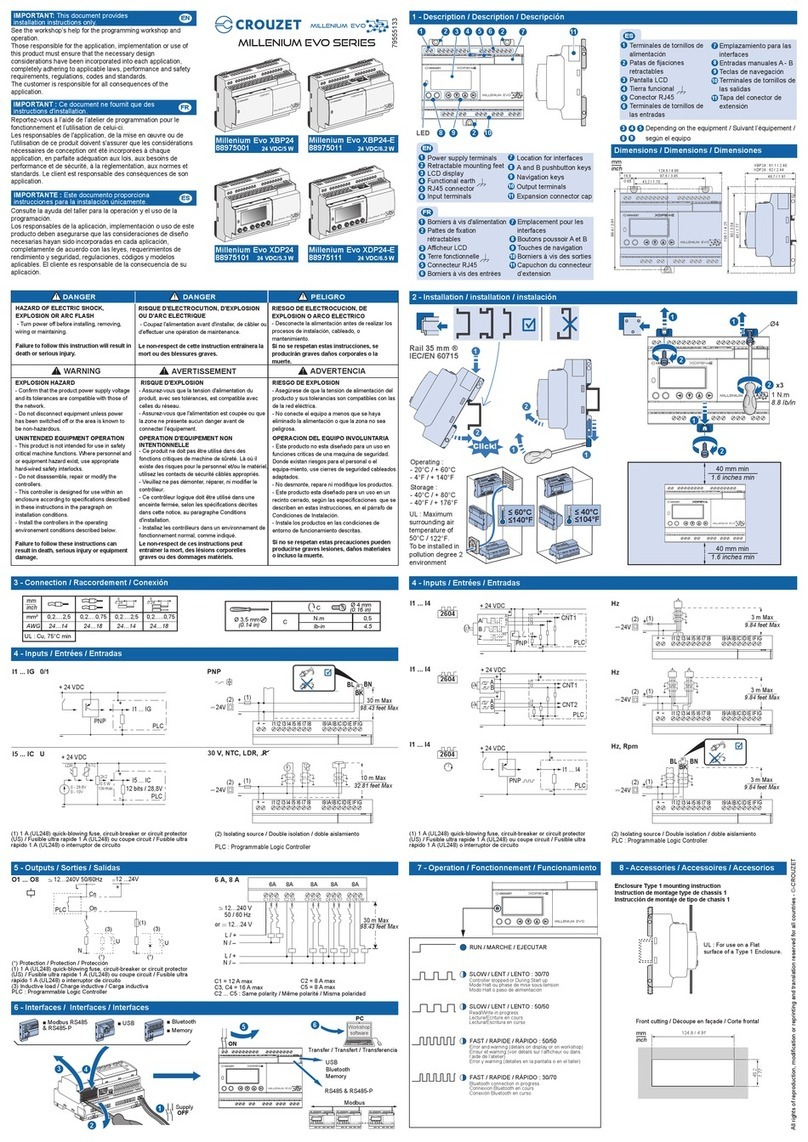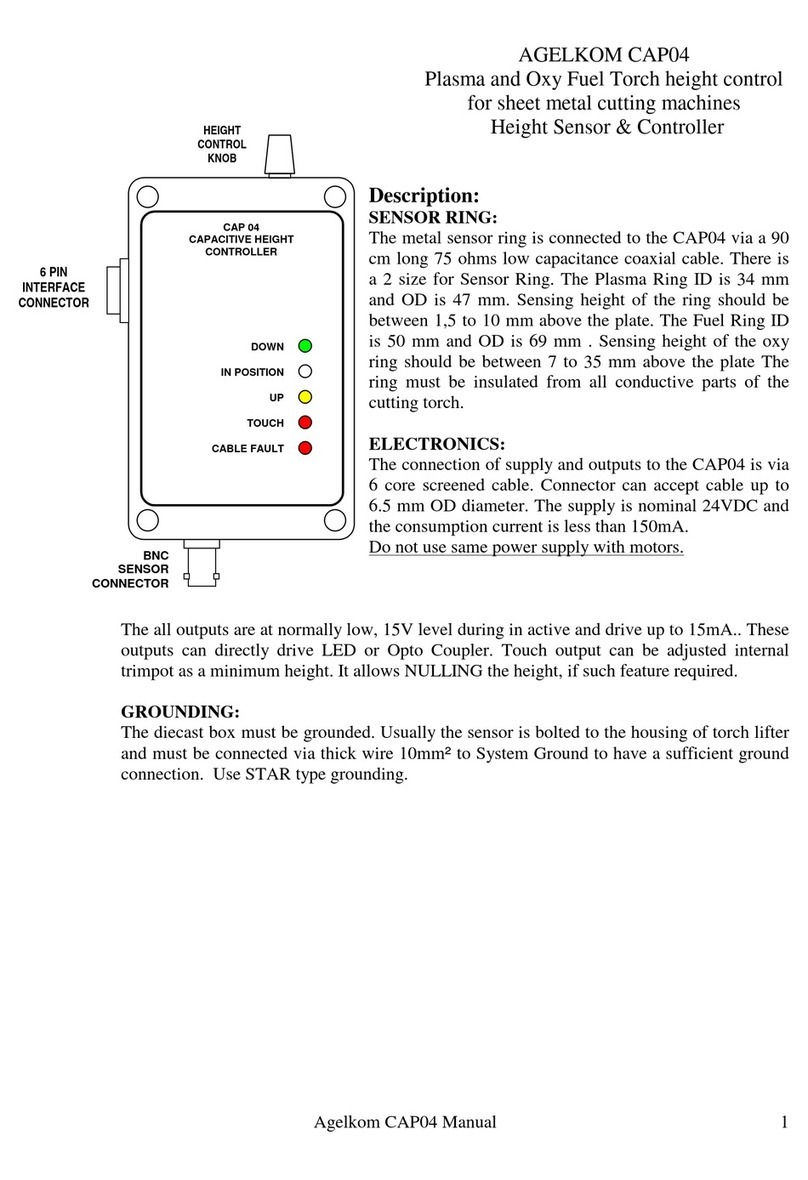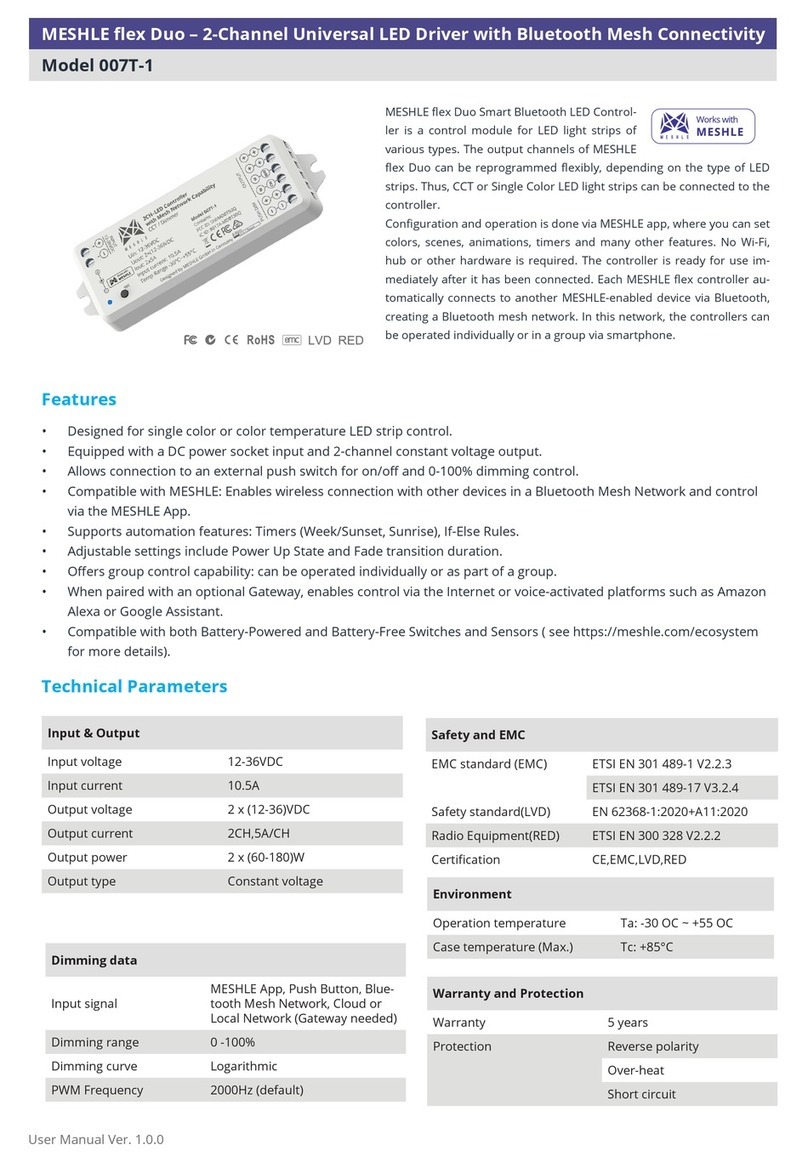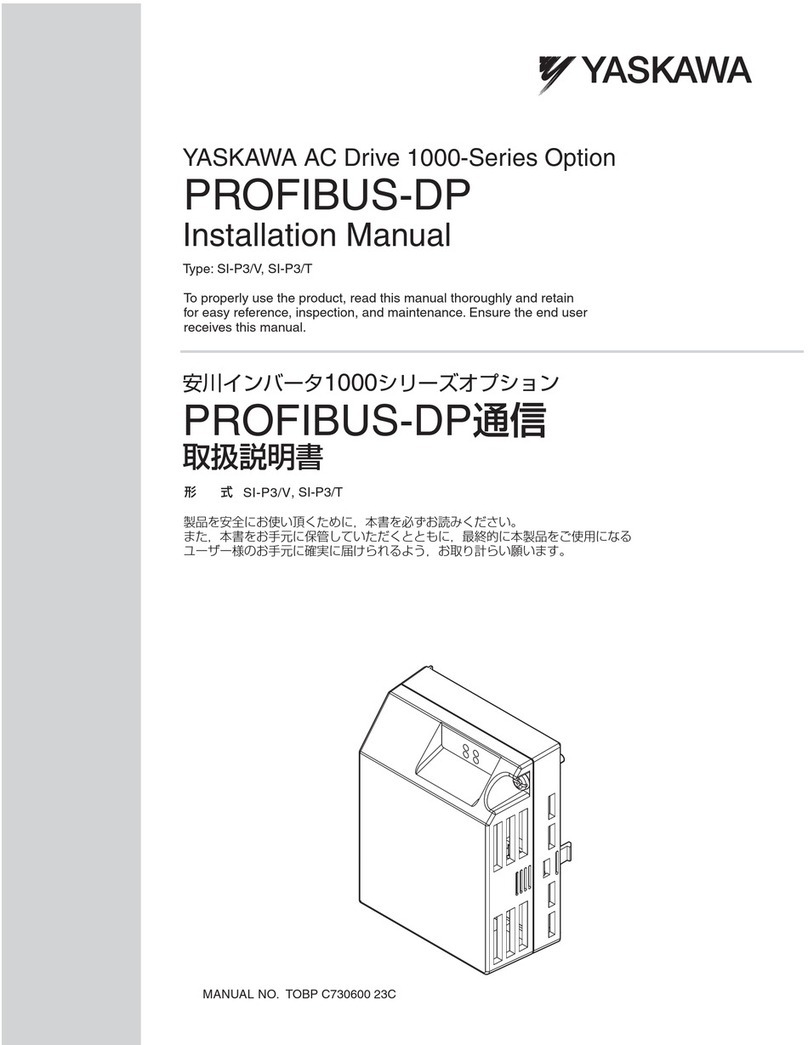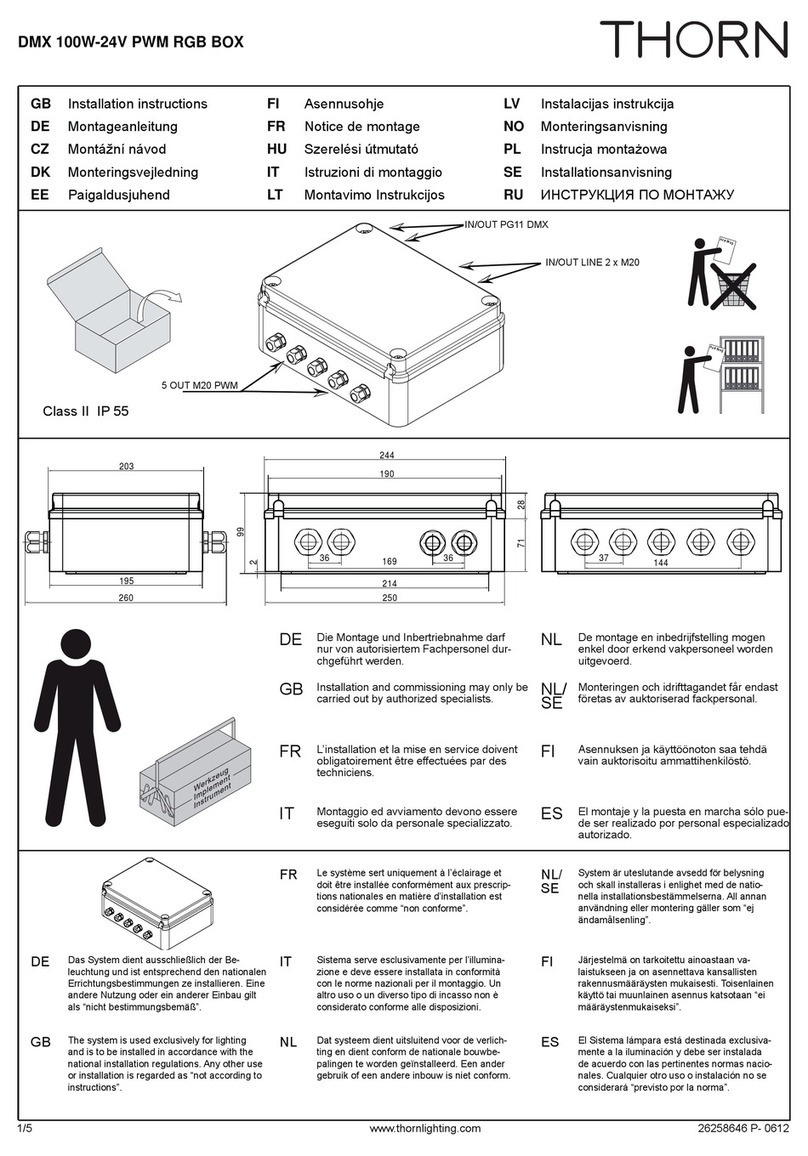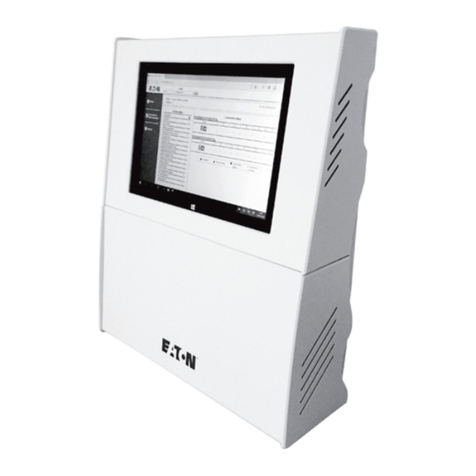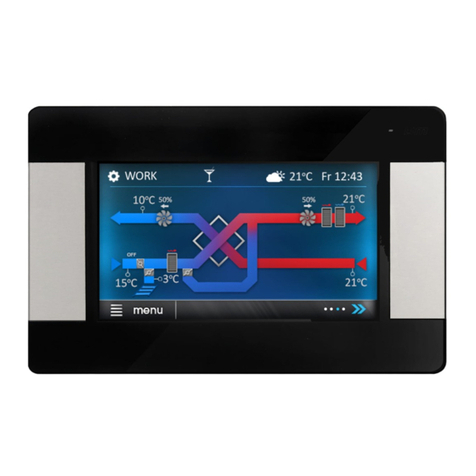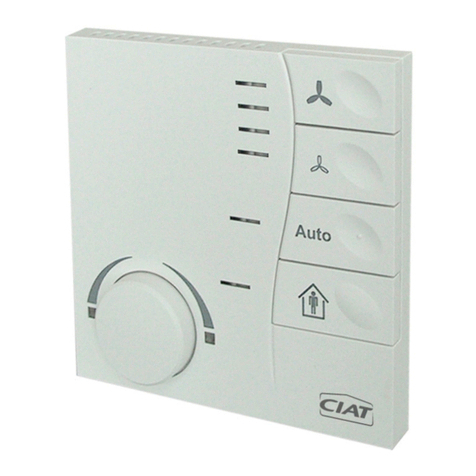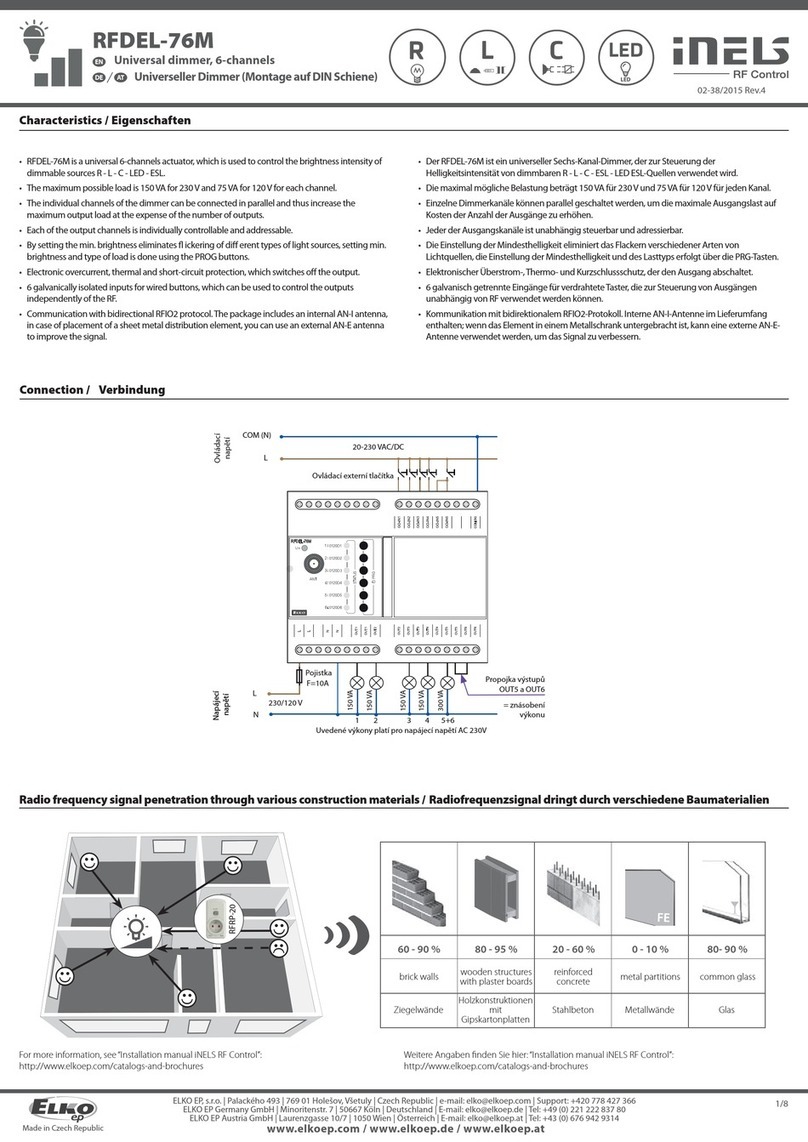TDI TURBOTWIN T30-Y User manual

Publication T30-729, Rev. 2
Dated: April 15, 2006
INSTALLATION AND OPERATING
MANUAL
MODEL: T30-Y
T
URBO
T
WIN
Engine Air Starter
AN96-425
MurCal
c
CALL MURCAL TO PLACE YOUR ORDER
P:(661)272-4700 F:(661)947-7570
www.murcal.com
e-mail:sales@murcal.com

TDI TURBOTWIN™
FROM TECH DEVELOPMENT
TABLE OF CONTENTS
SECTION SUBJECT PAGE
1.0 General Information 1
2.0 Orientation of Starter 1
3.0 Installing the Starter 3
4.0 Starter Operation 4
5.0 Model T30 Warranty 6
6.0 Operator’s Trouble Shooting Guide 7
LIST OF ILLUSTRATIONS
FIGURE TITLE PAGE
1 Envelope drawing 8
2 Installation Diagram 9
3 T30 Performance Curve, Air 10
4 T30 Performance Curve, Gas 10
Page iPublication T30-729, Rev. 2
Issued April 15, 2006

TDI TURBOTWIN™
FROM TECH DEVELOPMENT
Publication T30-729, Rev. 2 Page
Issued April 15, 2006
1
1.0 GENERAL NFORMATION
This manual provides instructions for the
installation and operation of the TDI
Turbotwin™ Models T30-Y and T30-U air
starters. If there are questions not
answered by this manual, please contact
your TDI Turbotwin™ distributor or dealer
for assistance.
The T30-Y and T30-U models are turbine
driven air starters with a pre-engage starter
drive. They are best suited for diesel
engines up to 20 Liters (1220 CID) or
gasoline engines up to 28 Liters (1709 CID).
Model T30-Y is designed for installation on
engines that use an SAE 1, 2, or 3 mounting
pad. Model T30-U is a basic configuration
with options to allow SAE 1, 2, or 3, or
special flange mounts.
The T30 Series starters are suited to
operate within a wide range of inlet air
pressures and ambient temperatures. The
engine size and parasitic loading will
determine the exact minimum pressure that
will ensure reliable starting.
The T30 Series starters are designed for
operation with compressed air or natural
gas. Moderate amounts of foreign matter or
liquid in the air stream will normally not
adversely affect T30 Series starters. As with
all other TDI Turbotwin™ models, no
lubrication is required in the supply air.
You need to review the rest of this manual
before installing your TDI Turbotwin™ T30
Series starter.
1.1 WARNINGS, CAUTIONS, & NOTES
Throughout this manual, certain types of
information will be highlighted for your
attention:
WARNING - used where injury to
personnel or damage to the
equipment is possible.
CAUTION - used where there is the
possibility of damage to the
equipment.
NOTE - used to point out special
interest information.
1.2 INSTALLATION and SERVICE
The TDI Turbotwin™ T30 series starters
provide distinct advantages of size and
efficiency compared to electric motor, vane-
type, or other turbine-type air starters. It is
important to properly install the starter to
receive full benefit of these advantages.
Repair technicians or service organizations
without turbine starter experience should not
attempt to repair this machine until they
receive factory approved training from TDI,
or its representatives. Proper operation and
repair of your TDI Turbotwin™ T30 Series
starter will assure continued reliable and
superior performance for many years.
WARNING
The TDI Turbotwin™ T30 Series starter
must be installed and operated in
accordance with the instructions given in this
manual. Failure to properly install the
starter, or failure to operate it according to
these instructions may result in damage to
the starter or the engine, or cause personal
injury.
NOTE
THIS STARTER IS TO BE SERVICED ONLY BY
AUTHORIZED TDI TURBOTWIN™ DISTRIBUTORS,
DEALERS, AND REPAIR STATIONS. DO NOT
OPERATE THIS STARTER UNLESS IT IS PROPERLY
ATTACHED TO AN ENGINE.
2.0 ORIENTATION OF THE
STARTER
If the factory orientation of the starter’s
pinion housing assembly, gearbox housing
assembly, exhaust port (turbine assembly),
or inlet housing assembly does not fit your
engine installation, these components can
be re-oriented.
2.1 MODEL T30-Y ORIENTATION
A. Determine the required orientation of the
flange assembly, gearbox assembly, and
any optional exhaust port.

TDI TURBOTWIN™
FROM TECH DEVELOPMENT
Page Publication T30-729, Rev. 2
Issued April 15, 2006
2
B. Note that the mounting flange assembly
can be rotated to twelve different positions
relative to the gearbox assembly (control
ports) and the gearbox housing assembly
can be rotated to four positions relative to
the inlet port. Additionally, the optional
exhaust housing can be rotated to eight
positions relative to the inlet port.
CAUTION
All screw threads are treated at the factory
with a fastener retention compound. Every
screw and tapped hole must be clean and
have a drop of Loctite 290 applied to the
threads before being reinstalled.
2.1.1 Pinion Housing Assembly Re-
Orientation
Remove the twelve mounting flange
attachment socket head cap screws.
Rotate the mounting flange to the desired
position and reinstall the twelve socket head
cap screws. Torque the twelve screws to
9.4 Lb-Ft. (12.7 Nm).
CAUTION
Ensure that the O-ring on the mounting
flange remains in position and is not cut.
2.1.2 Gearbox Assembly Re-Orientation
Remove the four tie bolts that secure the
gearbox assembly to the inlet assembly.
Rotate the gearbox housing / pinion housing
assembly to the desired position.
WARNING
Do not remove the five radial screws that
connect the inlet and turbine housing. The
inlet and turbine housing assembly must
remain in the same position, relative to each
other.
CAUTION
Ensure that the O-ring on the gearbox
assembly remains in position and is not cut.
Reinstall the four tie bolts. Torque the four
tie bolts to 9.4 Lb-Ft. (12.7 Nm).
CAUTION
Because of the length of the tie bolts, too
much torque may weaken or break them.
DO NOT OVER-TORQUE.
2.1.3 Inlet Assembly Orientation
Refer to Section 2.1.2.
After removing the four tie bolts, rotate the
inlet assembly to the desired position
relative to the control ports on the gearbox.
Align the components and reassemble per
Section 2.1.2.
CAUTION
Ensure that the O-ring on the gearbox
assembly remains in position and is not cut.
2.2 Model T30-U Flange Mount
Orientation
A. Determine the required orientation of the
flange assembly, gearbox assembly, and
any optional exhaust port.
B. Note that the mounting flange assembly
can be rotated to twelve different positions
relative to the gearbox assembly (control
ports) and the gearbox housing assembly
can be rotated to four positions relative to
the inlet port. Additionally, the optional
exhaust housing can be rotated to eight
positions relative to the inlet port.
CAUTION
All screw threads are treated at the factory
with a fastener retention compound. Every
screw and tapped hole must be clean and
have a drop of Loctite 290 applied to the
threads before being reinstalled.
2.2.1 Mounting Flange Re-Orientation
Remove the twelve mounting flange to
pinion housing assembly socket head cap
screws.

TDI TURBOTWIN™
FROM TECH DEVELOPMENT
Publication T30-729, Rev. 2 Page
Issued April 15, 2006
3
Rotate the mounting flange to the desired
position and reinstall the twelve cap screws.
Torque the twelve screws to 9.4 Lb-Ft. (12.7
Nm).
CAUTION
Ensure that the O-ring on the pinion housing
remains in position and is not cut.
2.2.2 Gearbox Assembly Re-Orientation
Remove the four tie bolts that secure the
gearbox housing assembly to the inlet
assembly.
Rotate the gearbox housing and pinion
housings assembly to the desired position.
WARNING
Do not remove the five radial screws that
connect the inlet and turbine housing. The
inlet and turbine housing assembly must
remain in the same position, relative to each
other.
CAUTION
Ensure that the O-ring on the gearbox
housing assembly remain in position and is
not cut.
Reinstall the four tie bolts. Torque the four
tie bolts to 9.4 Lb-Ft. (12.7 Nm).
CAUTION
Because of the length of the tie bolts, too
much torque may weaken or break them.
DO NOT OVER-TORQUE.
2.2.3 Inlet Housing Assembly Re-
Orientation
Refer to Section 2.2.2.
After removing the four tie bolts, rotate the
inlet assembly to the desired position
relative to the gearbox control ports. Align
the components and reassemble per
Section 2.2.2.
CAUTION
Ensure that the O-ring on the gearbox
assembly remains in position and is not cut.
3.0 INSTALLING THE STARTER
A Typical T30 Series installation is shown in
Figure 2. The components illustrated may
vary in shape, but there must at least be a
start switch, air tank, and air piloted relay
valve to correctly operate a T30 Series
starter.
NOTE
Mounting the air piloted relay valve on the
starter is preferred in installations where
space is available.
TDI recommends mounting the air piloted
relay valve no more than 3 meters (10 feet)
from the starter’s inlet port, and as close to
the starter as possible. If the starter is being
installed on a vehicle where the air tank is
within 3 meters (10 feet) of the starter, then
the relay valve may be mounted on the tank.
In installations where the tank is more than 3
meters (10 feet) from the starter, then the
relay valve must be mounted within 3 meters
(10 feet) of the starter.
A turbine driven starter does not require
lubrication in the supply air. Therefore, if a
vane-type starter motor is being replaced,
TDI recommends that all lubrication devices
and lines be removed to minimize flow
restrictions.
WARNING
If a fuel (pulse) lubricator has previously
been installed in the system, disconnect and
plug the line to eliminate spraying diesel fuel
on the engine.
Liberally grease the starter’s pinion teeth
with chassis lube and then mount the T30
Series starter on the engine. Tighten all
mounting hardware as appropriate.
After mounting the starter to the engine,
attach the supply air line from the tank, the
control air lines, and the solenoid to the
ignition system and air piloted relay valve.
TDI recommends installation of a “Glad
Hand” / quick disconnect for auxiliary
pressurization of the air tank.

TDI TURBOTWIN™
FROM TECH DEVELOPMENT
Page Publication T30-729, Rev. 2
Issued April 15, 2006
4
Because turbine starters such as the T30
Series are sensitive to flow restrictions, care
must be taken to use uniform hose or tubing
and fittings for connection of the supply air
line. Tees, elbows, and line length must be
kept to a minimum. TDI recommends that
hose or flex couplings be installed to
eliminate possible leakage caused by strain
on the supply air line.
Normally an air strainer is not required. In
dirty environments, use of a #40 mesh Y-
strainer is recommended.
Only type approved metallic hose
assemblies are approved in permanently
pressurized compressed air lines of starters.
Non-metallic hose assemblies are allowed
only in case the piping system will be
emptied after the starting procedure.
Pipe unions must be type approved by GL.
Downstream of the pressure regulator a
pressure relief valve is to be provided.
WARNING
Recheck all connections for tight fit.
Fill the air system tank. The T30 Series
starter is now ready to operate.
4.0 STARTER OPERATION
The maximum operating pressure limit is the
inlet pressure when measured at the starter
inlet pressure check port during the crank
cycle. In order to check the starter inlet
pressure, a 1/8" NPT pipe tap connection is
provided in the inlet housing to attach a
pressure gauge. Refer to figure 1. IN NO
CASE SHOULD INLET OPERATING
PRESSURE EXCEED 10.3 BAR (150
PSIG).
WARNING
Do not operate the TDI Turbotwin T30
Series air starter with air pressure greater
than the pressure rating on the nameplate.
This pressure is to be measured at the
starter inlet while the starter is running.
The static supply pressure will always be
higher than the operating pressure. As a
guideline, the maximum pressure limit (proof
pressure) that the T30 Series starter may be
subjected to is 20.7 Bar (300 PSIG).
System pressure that exceeds the maximum
operating limit must use a pressure reducer
device to ensure that the operating pressure
limit to the T30 Series starter is maintained.
System pressure that exceeds the 20.7 Bar
(300 PSIG) limit must, in addition to a
pressure reducer device, incorporate a
pressure relief valve set below 20.7 Bar (300
PSIG) in the supply air line.
All appropriate local pressure codes and
pressure limitations on other system
components must be adhered to and would
supersede the guidelines given in this
manual.
Follow the engine manufacturer’s
instructions for starting the engine.
WARNING
Do not engage the starter while the engine
is running.
If the starter fails to function properly when
first operated, or its performance
deteriorates with use, refer to the Operator’s
Trouble Shooting Guide, Section 6.0. If you
cannot solve the problem, or repair is
necessary, contact your local TDI
Turbotwin™ distributor or dealer.
TDI turbine starters share a common
characteristic known as “coast-down”. Once
unloaded, turbines must coast to a stop from
their unloaded or free-speed. Turbines
behave differently in this respect, when
compared to positive displacement devices,
because the friction (drag) of rubbing,
sealing surfaces (piston rings or vanes)
quickly stops an unloaded machine. Less
encumbered by drag, and typically
decelerating from much higher operating
speeds, turbines can take considerably
longer to come to rest.

TDI TURBOTWIN™
FROM TECH DEVELOPMENT
Publication T30-729, Rev. 2 Page
Issued April 15, 2006
5
When pre-engaged starters are used, a
procedure specifying a 30-second delay
between engine crank attempts would be
sufficient to insure correct operation. This is
common practice by many customers and
such delays are typically programmed into
fully automated starter control systems
found on many packages.
This "30 Second Rule" should also be
strictly followed when using the starter in a
"manual mode" or to perform routine
maintenance tasks such as engine timing,
inspections, valve adjustments, etc.
WARNING
Re-engaging pre-engaged turbine starters
during coast-down could damage the starter
pinion and the engine ring gear. Turbine air
starters must NEVER be re-engaged during
coast-down or before the starter comes to a
complete stop.
To insure correct starter operation,
customers may choose to incorporate an
electronic or pneumatic control device to
prevent accidental re-engagement during
coast-down. In addition, operators and
technicians should be educated about the
effects of coast-down.
CAUTION
The grease used in the planetary system
has a shelf life of 2 years. Therefore, if the
starter is NOT installed and operated on the
engine for 2 years after the starter is
manufactured, the grease should be
replaced prior to starter operation. The
manufactured date is reflected in the starter
serial number. (Ex: 0602-0567 has a
manufactured date of February 2006).

TDI TURBOTWIN™
FROM TECH DEVELOPMENT
Page Publication T30-729, Rev. 2
Issued April 15, 2006
6
5.0 WARRANTY
TDI TURBOTWIN ENGINE STARTER WARRANTY
Tech Development Inc. (TDI) warrants to the original user of the TDI TurboTwin™ Model T30
Series air starters to be free from defects in material and workmanship for a period of one year
from date of purchase by such user. The warranty period shall begin on the actual delivery date
to the original user or twelve (12) months from the date of shipment from TDI, whichever comes
first. The conditions of this warranty are: a) TDI is notified within this period by return of such
product to TDI or its authorized distributor or dealer, transportation prepaid by user; b) such
product has been installed according to TDI’s specifications; c) such product has not been
misused, abused or improperly maintained by user; d) the defect is not the result of normal wear
and tear; and e) such starter product has not been repaired with parts not manufactured or
authorized by TDI, and TDI installation and repair procedures as outlined in the appropriate
manual were properly followed.
Tech Development Inc. shall, at its option, either repair or replace, without charge, any such
starter product found by TDI’s examination to be defective, or by mutual agreement, refund the
user’s purchase price in exchange for such starter product. Repairs or replacements are
warranted for the remainder of the original warranty period.
Tech Development Inc. makes no other warranty, and IMPLIED WARRANTIES INCLUDING ANY
WARRANTY OR MERCHANTABILITY OR FITNESS FOR A PARTICULAR PURPOSE ARE
HEREBY DISCLAIMED.
This warranty constitutes the entire obligation of Tech Development Inc. relating to the sale and
use of such product, and TDI’s maximum liability is limited to the purchase price of such product
at the date of purchase. In no event shall TDI be liable for incidental, indirect, consequential or
special damages of any nature arising from the sale or use of such engine starter product.

TDI TURBOTWIN™
FROM TECH DEVELOPMENT
Publication T30-729, Rev. 2 Page
Issued April 15, 2006
7
6.0 OPERATOR’S TROUBLESHOOTING GUIDE
TROUBLE PROBABLE CAUSE SOLUTION
A. Relay valve improperly
installed. A. Check typical installation
diagram and correct
B. Relay valve not sealing
properly. B. Check for damaged sealing
ring, replace relay valve or
damaged parts.
1. Air always flow through
exhaust
C. Solenoid is not sealing,
pressure remains in APP port of
relay valve.
C. Check solenoid potential at the
lead to ground should be 0. If not,
fix ignition switch problem.
2. Starter engages but does not
run, A. Bad relay valve A. Replace relay valve.
3. Starter does not run, small air
flow from turbine exhaust or
drive housing.
A. Nozzle blockage. A. Remove blockage or obstruction
from nozzles.
4. Starter does not run. Normal
air flow from exhaust. A. Excessive bends in the
supply line. A. Shorten length or straighten
supply air line.
A. Air pressure is too low A. Increase air pressure to 40 -150
psig.
B. Control lines to starter ports
reversed. B. Check installation diagram and
correct.
C. Solenoid valve not operating
or plugged. C. Check wiring and solenoid
operation. Correct wiring, remove
blockage, or replace solenoid
valve as needed.
5. Pinion does not engage
D. Damaged pinion teeth. D. Replace pinion or starter drive
as necessary.
A. Air pressure too low A. Increase air pressure to 40 -150
psig.
B. Excessive back pressure. B. Check Exhaust Closure Plate.
C. Worn or broken starter drive. C. Replace starter drive.
6. Starter runs but engine cranks
slowly or not at all.
D. Nozzle blocked or damaged. D. Remove blockage or replace
damaged parts.
A. Solenoid valve is not sealing
correctly. A. See 1C above7. Starter continues to operate
after start button is released. B. Relay valve is not sealing
correctly. B. See 1B above
A. Air connections are too tight. A. Tighten loose fittings. Repair or
replace damaged fittings.
B. Damaged air lines: crushed,
frayed, kinked. B. Replace damaged lines.
C. Relay valve is not sealing
correctly. C. See 1B above
8. Air tank pressure decays after
extended shut down.
D. Solenoid valve is stuck open. D. See 1C above

TDI TURBOTWIN™
FROM TECH DEVELOPMENT
Page Publication T30-729, Rev. 2
Issued April 15, 2006
8
Figure 1. T30-Y TurboTwin Air Starter Envelope Drawing

TDI TURBOTWIN™
FROM TECH DEVELOPMENT
Publication T30-729, Rev. 2 Page
Issued April 15, 2006
9
Figure 2. T30-Y TurboTwin Air Starter Installation Diagram

TDI TURBOTWIN™
FROM TECH DEVELOPMENT
Page Publication T30-729, Rev. 2
Issued April 15, 2006
10
T306 Performance Curve
6 Nozzles, Compressed Air, 9.0:1 RATIO
0 500 1000 1500 2000 2500 3000 3500 4000 4500 5000 5500 6000
0
25
50
75
100
125
150
0
5
10
15
20
25
30
35
40
45
50
Inlet Pressure SCFM Nm3/h
150 PSIG 600 1020
120 PSIG 478 813
90 PSIG 365 621
60 PSIG 255 434
120psig
60psig
LB.FT HP
90psig
POWER
68
136
204
Nm KW
170
102
34
3.7
7.5
11.2
14.9
18.6
22.4
29.8
26.1
33.5
37.2
TORQUE
150psig
Figure 3. T30-Y TurboTwin Air Starter Performance Curve (Air)
T306 Performance Curve
6 Nozzles, Methane Gas, 9.0:1 RATIO
0 5 10 15 20 25 30 35 40 45 50 55 60 65 70
0
25
50
75
100
125
0
5
10
15
20
25
30
35
Inlet Pressure SCFM Nm3/h
120 PSIG 600 1020
90 PSIG 465 791
60 PSIG 330 561
0
34
68
102
136
170
0
7.5
18.6
11.2
14.9
3.7
22.4
26.1
120psig
90psig
60psig
TORQUE
NmLKW
B.FTHP
POWER
Figure 4. T30-Y TurboTwin Air Starter Performance Curve (Gas)
Other TDI Controllers manuals

